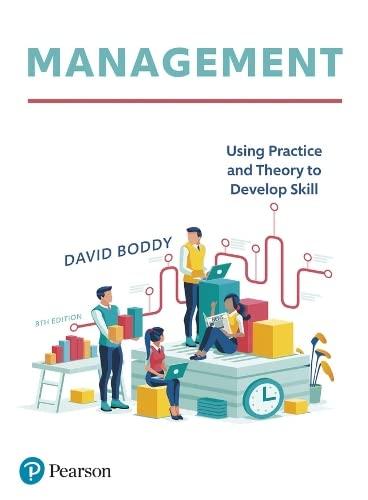Question
BrandsEye's primary target is large businesses, and the service and pricing options on launch reflected this. Of course, one of the businesses that the tool
BrandsEye's primary target is large businesses, and the service and pricing options on launch reflected this. Of course, one of the businesses that the tool has been tracking from day one is BrandsEye itself. While mentions are quantitatively analyzed to generate a reputation score, they can all be qualitatively analyzed to determine sentiment from specific individuals and to highlight product features that may be improved.
BrandsEye requires a rapid rate of development to ensure its product remains competitive. With a relatively small number of vocal individuals discussing its industry online, BrandsEye decided that traditional, and expensive, focus groups and surveys were out. These could instead be replaced by real-time analysis and one-to-one consumer engagement. BrandsEye also realized that in the relatively new field of online reputation measurement and management, it was important to have online evangelists on board in order to, over time, heighten brand awareness among its big-business target market.
In the week following its launch there were over 120 conversations about BrandsEye from many smaller companies and individuals. They loved the service but found the price prohibitive. Over the next three months more than three hundred unique conversations were tracked, with important outcomes for BrandsEye's product offering.
An example comment that represented a common theme was "BrandsEye Online Reputation Management for Big Business ONLY."Nic Haralambous, "BrandsEye Online Reputation Management for Big Business ONLY," nh [dot] com, March 13, 2008,http://nicharalambous.com/2008/03/13/brandseye-online-reputation-management-for-big-business-only(accessed June 20, 2010).
While big business sales continued to grow, BrandsEye realized that the more people who engage with its product, the more feedback it could collect and, with that, increase the rate of market-driven development. Second, of doing this that it realize that there was a considerable untapped market among small businesses and individuals.
Instead of conducting focus groups, BrandsEye found that one already existed! Using feedback from early commenters, BrandsEye developed a small business and blogger product. The service was priced to be accessible to this target market at only $1 a month.
Since the launch of the new service, BrandsEye has grown considerably. Several new features have been added in direct response to market needs. BrandsEye has seen an over 800 percent turnover increase for its big-business offering and a 2,500 percent increase in the overall number of accounts. It just took a little research.
Visit the BrandsEye Web site athttp://www.brandseye.com.
CASE STUDY QUESTIONS
1. How are the data used both quantitatively and qualitatively?
2. Why was BrandsEye able to conduct consumer research without conducting focus groups? What are the limitations of doing this that it would need to be aware of?
3. How has market research helped BrandsEye's business to grow?
Step by Step Solution
There are 3 Steps involved in it
Step: 1

Get Instant Access to Expert-Tailored Solutions
See step-by-step solutions with expert insights and AI powered tools for academic success
Step: 2

Step: 3

Ace Your Homework with AI
Get the answers you need in no time with our AI-driven, step-by-step assistance
Get Started


